Bingxuan Xu
Generative Diffusion Models for Wireless Networks: Fundamental, Architecture, and State-of-the-Art
Jul 22, 2025Abstract:With the rapid development of Generative Artificial Intelligence (GAI) technology, Generative Diffusion Models (GDMs) have shown significant empowerment potential in the field of wireless networks due to advantages, such as noise resistance, training stability, controllability, and multimodal generation. Although there have been multiple studies focusing on GDMs for wireless networks, there is still a lack of comprehensive reviews on their technological evolution. Motivated by this, we systematically explore the application of GDMs in wireless networks. Firstly, starting from mathematical principles, we analyze technical advantages of GDMs and present six representative models. Furthermore, we propose the multi-layer wireless network architecture including sensing layer, transmission layer, application layer, and security plane. We also introduce the core mechanisms of GDM at each of the layers. Subsequently, we conduct a rigorous review on existing GDM-based schemes, with a focus on analyzing their innovative points, the role of GDMs, strengths, and weaknesses. Ultimately, we extract key challenges and provide potential solutions, with the aim of providing directional guidance for future research in this field.
Cross-Layer Encrypted Semantic Communication Framework for Panoramic Video Transmission
Nov 19, 2024Abstract:In this paper, we propose a cross-layer encrypted semantic communication (CLESC) framework for panoramic video transmission, incorporating feature extraction, encoding, encryption, cyclic redundancy check (CRC), and retransmission processes to achieve compatibility between semantic communication and traditional communication systems. Additionally, we propose an adaptive cross-layer transmission mechanism that dynamically adjusts CRC, channel coding, and retransmission schemes based on the importance of semantic information. This ensures that important information is prioritized under poor transmission conditions. To verify the aforementioned framework, we also design an end-to-end adaptive panoramic video semantic transmission (APVST) network that leverages a deep joint source-channel coding (Deep JSCC) structure and attention mechanism, integrated with a latitude adaptive module that facilitates adaptive semantic feature extraction and variable-length encoding of panoramic videos. The proposed CLESC is also applicable to the transmission of other modal data. Simulation results demonstrate that the proposed CLESC effectively achieves compatibility and adaptation between semantic communication and traditional communication systems, improving both transmission efficiency and channel adaptability. Compared to traditional cross-layer transmission schemes, the CLESC framework can reduce bandwidth consumption by 85% while showing significant advantages under low signal-to-noise ratio (SNR) conditions.
TDGCN-Based Mobile Multiuser Physical-Layer Authentication for EI-Enabled IIoT
Nov 13, 2024



Abstract:Physical-Layer Authentication (PLA) offers endogenous security, lightweight implementation, and high reliability, making it a promising complement to upper-layer security methods in Edge Intelligence (EI)-empowered Industrial Internet of Things (IIoT). However, state-of-the-art Channel State Information (CSI)-based PLA schemes face challenges in recognizing mobile multi-users due to the limited reliability of CSI fingerprints in low Signal-to-Noise Ratio (SNR) environments and the constantly shifting CSI distributions with user movements. To address these issues, we propose a Temporal Dynamic Graph Convolutional Network (TDGCN)-based PLA scheme. This scheme harnesses Intelligent Reflecting Surfaces (IRSs) to refine CSI fingerprint precision and employs Graph Neural Networks (GNNs) to capture the spatio-temporal dynamics induced by user movements and IRS deployments. Specifically, we partition hierarchical CSI fingerprints into multivariate time series and utilize dynamic GNNs to capture their associations. Additionally, Temporal Convolutional Networks (TCNs) handle temporal dependencies within each CSI fingerprint dimension. Dynamic Graph Isomorphism Networks (GINs) and cascade node clustering pooling further enable efficient information aggregation and reduced computational complexity. Simulations demonstrate the proposed scheme's superior authentication accuracy compared to seven baseline schemes.
Efficient Gaussian Process Classification-based Physical-Layer Authentication with Configurable Fingerprints for 6G-Enabled IoT
Jul 23, 2023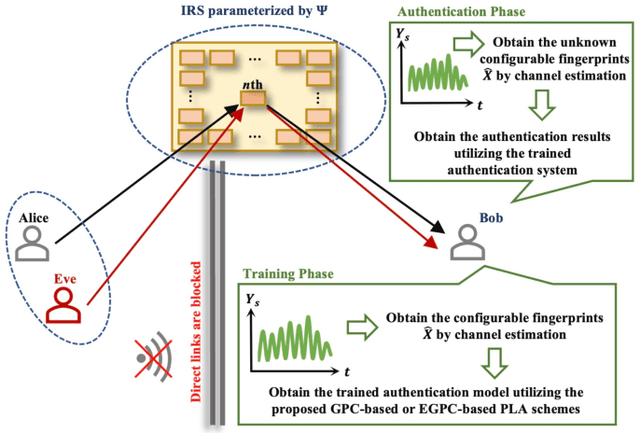
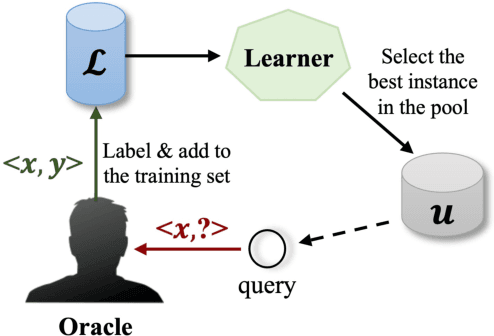
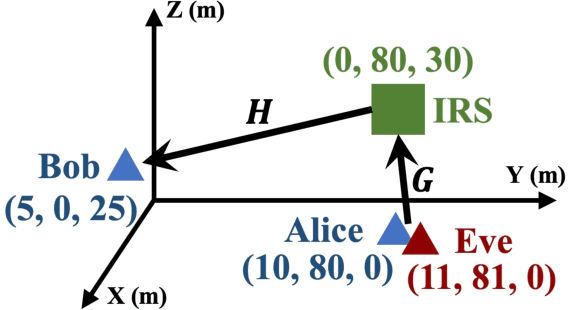
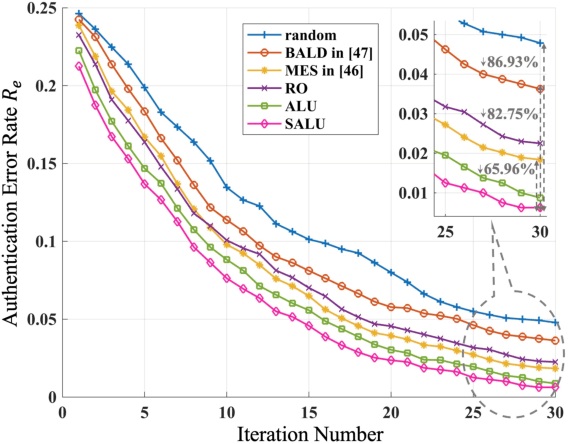
Abstract:Physical-Layer Authentication (PLA) has been recently believed as an endogenous-secure and energy-efficient technique to recognize IoT terminals. However, the major challenge of applying the state-of-the-art PLA schemes directly to 6G-enabled IoT is the inaccurate channel fingerprint estimation in low Signal-Noise Ratio (SNR) environments, which will greatly influence the reliability and robustness of PLA. To tackle this issue, we propose a configurable-fingerprint-based PLA architecture through Intelligent Reflecting Surface (IRS) that helps create an alternative wireless transmission path to provide more accurate fingerprints. According to Baye's theorem, we propose a Gaussian Process Classification (GPC)-based PLA scheme, which utilizes the Expectation Propagation (EP) method to obtain the identities of unknown fingerprints. Considering that obtaining sufficient labeled fingerprint samples to train the GPC-based authentication model is challenging for future 6G systems, we further extend the GPC-based PLA to the Efficient-GPC (EGPC)-based PLA through active learning, which requires fewer labeled fingerprints and is more feasible. We also propose three fingerprint selecting algorithms to choose fingerprints, whose identities are queried to the upper-layers authentication mechanisms. For this reason, the proposed EGPC-based scheme is also a lightweight cross-layer authentication method to offer a superior security level. The simulations conducted on synthetic datasets demonstrate that the IRS-assisted scheme reduces the authentication error rate by 98.69% compared to the non-IRS-based scheme. Additionally, the proposed fingerprint selection algorithms reduce the authentication error rate by 65.96% to 86.93% and 45.45% to 70.00% under perfect and imperfect channel estimation conditions, respectively, when compared with baseline algorithms.
Latent Semantic Diffusion-based Channel Adaptive De-Noising SemCom for Future 6G Systems
Apr 19, 2023
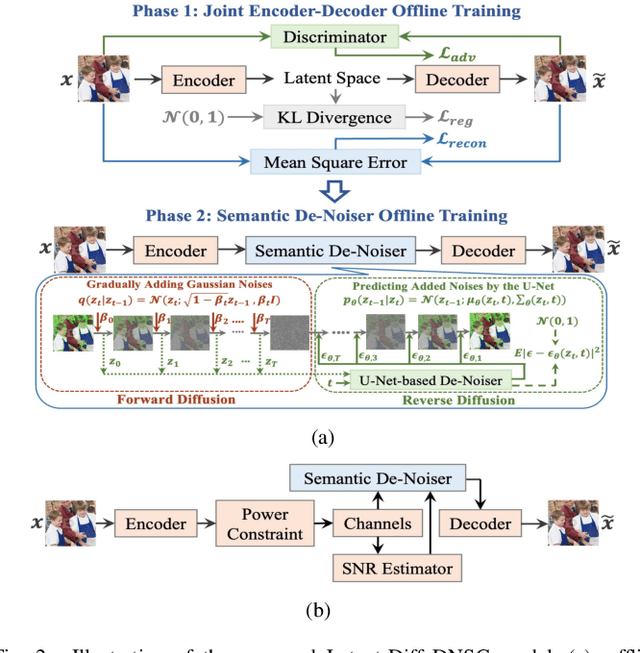
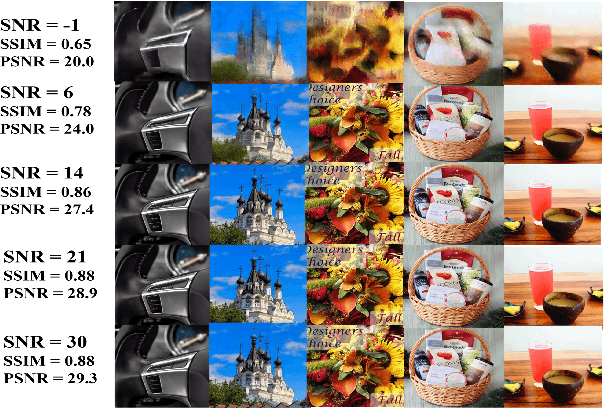
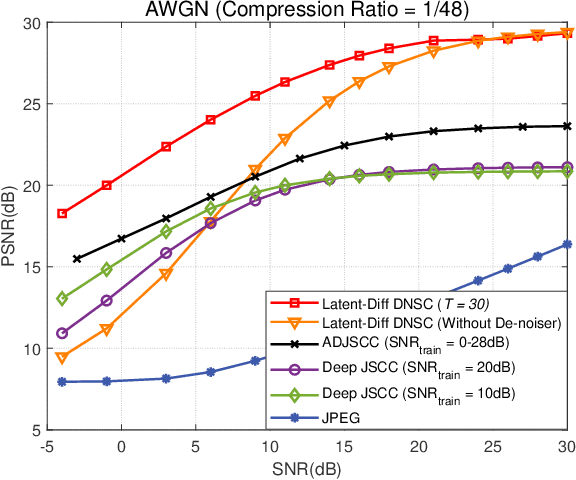
Abstract:Compared with the current Shannon's Classical Information Theory (CIT) paradigm, semantic communication (SemCom) has recently attracted more attention, since it aims to transmit the meaning of information rather than bit-by-bit transmission, thus enhancing data transmission efficiency and supporting future human-centric, data-, and resource-intensive intelligent services in 6G systems. Nevertheless, channel noises are common and even serious in 6G-empowered scenarios, limiting the communication performance of SemCom, especially when Signal-to-Noise (SNR) levels during training and deployment stages are different, but training multi-networks to cover the scenario with a broad range of SNRs is computationally inefficient. Hence, we develop a novel De-Noising SemCom (DNSC) framework, where the designed de-noiser module can eliminate noise interference from semantic vectors. Upon the designed DNSC architecture, we further combine adversarial learning, variational autoencoder, and diffusion model to propose the Latent Diffusion DNSC (Latent-Diff DNSC) scheme to realize intelligent online de-noising. During the offline training phase, noises are added to latent semantic vectors in a forward Markov diffusion manner and then are eliminated in a reverse diffusion manner through the posterior distribution approximated by the U-shaped Network (U-Net), where the semantic de-noiser is optimized by maximizing evidence lower bound (ELBO). Such design can model real noisy channel environments with various SNRs and enable to adaptively remove noises from noisy semantic vectors during the online transmission phase. The simulations on open-source image datasets demonstrate the superiority of the proposed Latent-Diff DNSC scheme in PSNR and SSIM over different SNRs than the state-of-the-art schemes, including JPEG, Deep JSCC, and ADJSCC.
 Add to Chrome
Add to Chrome Add to Firefox
Add to Firefox Add to Edge
Add to Edge